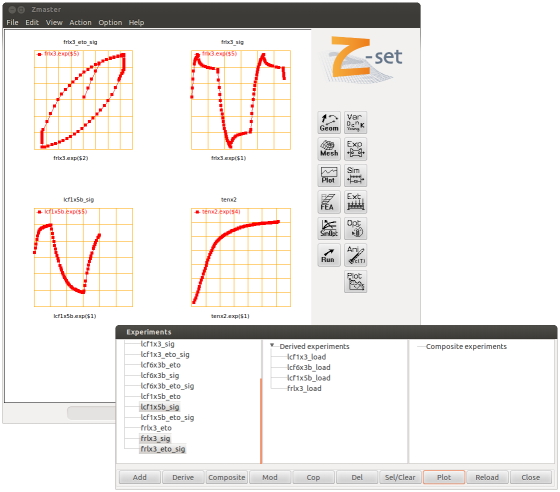Z-simopt GUI is of great help for material parameter identification.
Nowadays, industry demands more and more complex material models, in order to take into account all relevant physical phenomena (e.g., strain rate and temperature dependence, cyclic plasticity, creep, ageing, low cycle fatigue, etc.) during the structural design process.
For the most sophisticated models, the identification of the material parameters is indeed a challenging process, requiring efficient dedicated optimization tools.
One of the main difficulties associated with the use of complex constitutive equations is the number of parameters to be handled and the quality of the experiments performed.
The Z-simopt solution is a Graphical User Interface integrating two powerful tools — Z-sim and Z-opt — and provides instruments to streamline the identification process.

- Experimental result management can be achieved by dedicated tools for importing data, filtering and plotting results. The data can be arranged into sub-directories, enabling fast and consistent data mining operations, namely search, access and analysis ;
- Simulation tools allow a quick set-up of Z-sim input files associated with experimental data. Simulations can be defined using tables or directly from experimental results ;
- Optimization operations are easily defined in Z-opt input files, based on simulation/experiment couples. The number of experiments is not limited. Weighting factors can be associated with comparisons, in order to moderate the influence of each test. Among other useful tools, plotting of the error function or variable evolution during optimization is available ;
- Specific variable management is used for the non-isothermal case, allowing the consistency of the solution to be checked over the entire temperature range ;
- Variable management (create, delete, modify) and the history of the operations can be accessed from a single panel. History items can be created to store the current state of the variables and used to regenerate the database at any point with the previously saved values.
The software is available for both Windows and Linux computers.